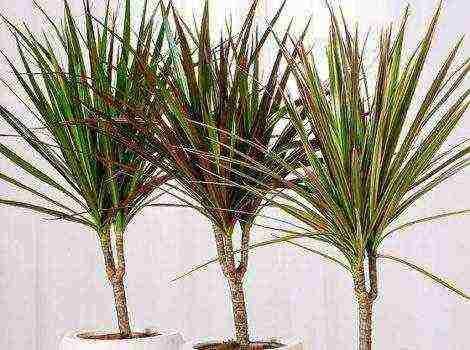Content
- 1 Planting seeds
- 2 Further care of seedlings
- 3 Growing hyacinths in pots
- 4 Reproduction
- 5 Useful video
- 6 Growing hyacinths
- 7 Growing hyacinths at home
- 8 Seed propagation of hyacinths
- 9 How to grow hyacinths? Simple Tips
- 10 Features of growing hyacinth outdoors in the garden
- 11 Planting hyacinth in the ground
- 12 Features of hyacinth care in the open field
- 13 Pruning hyacinth
- 14 Transfer
- 15 Hyacinth propagation
- 16 Hyacinth bloom
- 17 Popular species (varieties)
- 18 Note to the florist
- 19 Answers to readers' questions
Gourmet hyacinth is a bulbous plant, therefore it is bred mainly with bulbs. However, you can also grow a beautiful flower from seeds. This method is mainly used when they want to experiment with breeding new varieties.
Planting seeds
You can germinate seedlings both in the garden bed and in some container. The soil into which the seeds will be sown is best prepared from approximately equal parts of turf, peat and sand. It is also necessary to provide the planting site with good drainage.
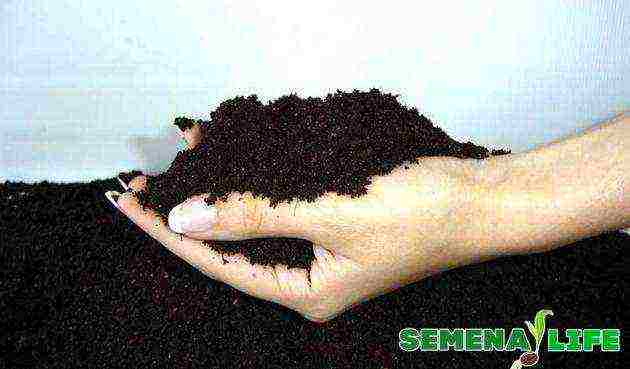
Seeds are sown in the grooves rather densely (at the rate of 150-200 seeds per square meter) and shallow. The depth of the seed should not exceed 1.5-2 centimeters, otherwise the seedlings will not sprout.
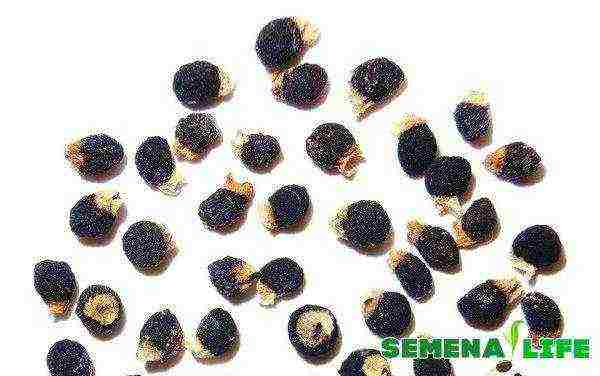
The most suitable time for planting is the beginning of autumn, while seedlings will appear only next spring. The planted seeds must go through a vernalization period, so it is best to store the container in a cool place in winter, sometimes with moderate moisture. If the planting is made in an open area, then the garden bed for the winter is covered with a 20-centimeter layer of compost, hay or similar mulch.
On a note! Hyacinth seeds ripen in capsules that form when the flowers fade.
For their preparation, light yellow unopened boxes are chosen, dried for several days and collected dry seeds in paper bags. Store in a cool dry place before sowing.
The first shoots that appear after 5-6 months do not touch, because the plants are very weak and not rooted. They only need to provide:
- Periodic weeding
- Regular moderate watering
- Loosening the topsoil
- Protection against mechanical damage
- Sufficient but not direct sunlight
- Top dressing (you can use superphosphates, ammonium nitrate)
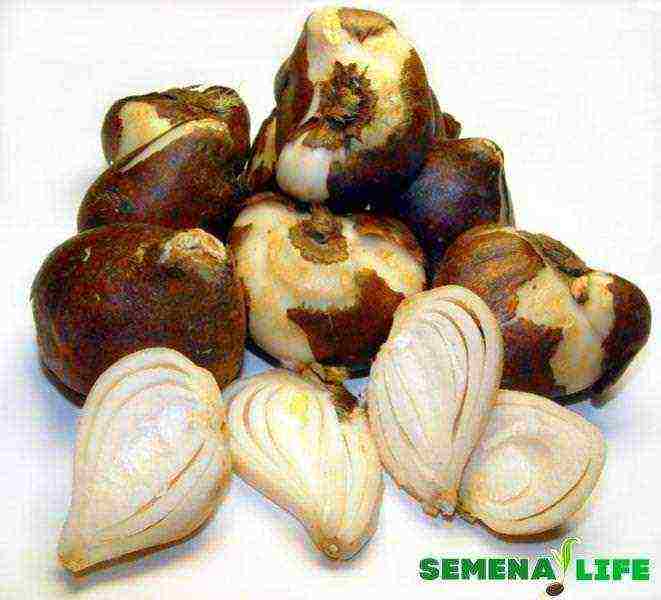
The first year, a weak bulb is not dug up, leaving it to winter in the ground. Starting next year, like all bulbous ones, they are dug up in the summer, dried well in a dark, dry room and stored until autumn. In the fall, the bulbs are planted in the ground.
If the seeds are grown in seedling containers, then they are not replanted until two years after sowing.
The best place for them is cold greenhouses.
Further care of seedlings
The bulbs obtained from the seeds are planting material that is already familiar to everyone and is handled as usual. As you know, hyacinths are planted in the soil in autumn, covered with a thick layer of straw or similar material.
Before planting, the bulbs can be treated with a fungicide, after all, hyacinths are a little capricious and prone to disease. In the spring, after germination, the flowers must be fed.
It should be remembered that plants grown from seeds bloom only after 4-6 years - this is a long way that requires time and patience.
But on the other hand, the resulting hyacinths, as a rule, do not inherit maternal traits, that is, it is quite possible to obtain a completely new, unusual variety of a flower. This is what attracts breeders and enthusiastic gardeners to seed reproduction. If it is possible to grow a really new type of exquisite flower, then in the future it is propagated by the usual, bulbous method.

Hyacinth belongs to the lily family.
There are more than 30 types of various subspecies.
The flowers of the plant can be double, fragrant and simple.
Suitable for growing at home, garden plots, greenhouses and botanical gardens. Asia is considered the birthplace of the flower.
…
Growing hyacinths in pots
 How to grow hyacinths in pots?
How to grow hyacinths in pots?
The plant prefers bright, diffused light. Dislikes cold winds and drafts.
The soil should be loose, breathable. It is necessary to add humus to the substrate.
The tanks must have a drainage system that will not allow excess moisture to accumulate. For this, expanded clay, pebbles, shards or broken brick are suitable.
After flowering, the peduncle must be cut off. At the beginning of autumn, watering and feeding is reduced to a minimum.
At the beginning of winter, the plant begins a dormant period. At this time, the leaves shrink and die off. All nutrients are transferred to the onion.
ADVICE: At the beginning of spring, the soil is mulched with compost. Reproduction can be carried out during the same period.
Reproduction
Consider how to propagate hyacinths at home. There are four breeding methods.
Seeds
Reproduction of hyacinths at home using seeds should only be used for breeding new subspecies.
When planted with seeds, the plant will bloom only 6-9 years after planting.
How to grow hyacinth from seeds at home? It is best to tie the planting material in warm weather. It is necessary to select the boxes that have not yet opened.
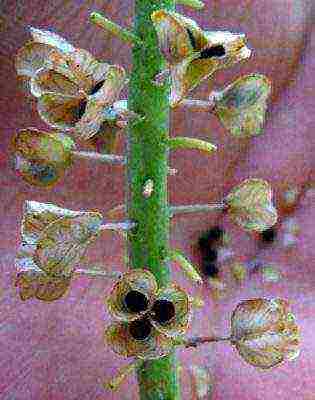 It is important that they are amber.
It is important that they are amber.
Emeralds are not recommended to be used, since they have not yet had time to ripen. A week after assembly, the boxes crack on their own.
The seeds are thoroughly dried and cleaned of scales. It is best to use paper bags. They must be stored in a cool room before sowing.
It is necessary to prepare containers with a substrate. Small grooves are made with a depth of no more than 2 cm.
If you sow the seeds deeper, they will not have time to sprout and will rot in the soil.
For 1 sq. about 200 seeds are sown per meter. Drainage and sand must be poured at the bottom of the container. This will keep the root system from rotting. In six months, the first shoots should be expected.
IMPORTANT: The seeds must have time to pass the vernalization stage. Sowing is done in early autumn. The first shoots will appear only in the middle of next spring.
By the end of the growing season, a small onion should appear. It is pear-shaped. During the entire growing period, the soil must be loosened, fertilized, ventilated, systematically watered.
ADVICE: For top dressing, you can use ammonium nitrate, potassium sulfate or superphosphates.
Bulbs
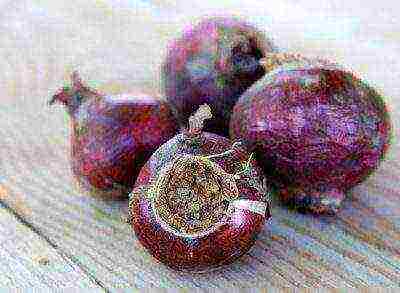 How to grow hyacinth from a bulb? One container with a diameter of 18-20 cm is allocated for each onion.
How to grow hyacinth from a bulb? One container with a diameter of 18-20 cm is allocated for each onion.
In the container, drainage is made from clay petioles. Fine-grained sea sand is poured at the bottom.
The soil should be fortified with plenty of nutrients.
The bulbs are planted in such a way that 1/3 remains on the soil surface. The seeding depth should not exceed 4 cm. The soil must be loosened, fertilized and watered systematically.
Two years after planting, a full-fledged plant should grow.For 3 or 4 years of life, this representative of the flora blooms. During all active growth, the flower needs a temperature of 17-21 ° C. The room should be bright and well ventilated.
ADVICE: Diseased specimens must be removed.
Leaflets
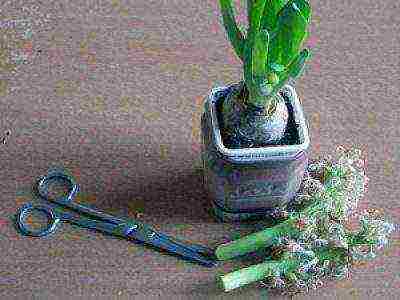 In the budding phase, this representative of the flora is allowed to propagate by leaves.
In the budding phase, this representative of the flora is allowed to propagate by leaves.
You can take 2 leaves from each flower. They are immediately dipped into the heteroauxin mixture. Half a tablet is diluted in 1 liter of water.
It is necessary to keep the leaves in the solution for 6-9 hours.
Then they are planted in containers with a substrate. The soil is mixed with fine-grained sea sand and peat.
ATTENTION: Growth should take place at a temperature of 14-16 ° C. Air humidity should not fall below 90%.
Callus should appear on the wound surface after 9-11 days. A month later, the first buds of bulbs appear. After 60 days, young new leaves and a root system should appear on the bulbs. After that, the flower must be transplanted into a nutritious, fortified soil.
One leaf can give from 7 to 10 children.
Double scales
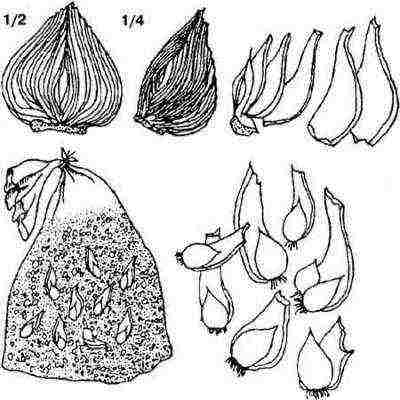 The bulbs are cleaned and dried. At the onion, it is necessary to cut off 1/3 of its height. After that, it is divided into 8 equal parts.
The bulbs are cleaned and dried. At the onion, it is necessary to cut off 1/3 of its height. After that, it is divided into 8 equal parts.
It is important that each piece retains a small piece of the bottom.
One large onion can produce up to one hundred paired scales. To disinfect the wounds of the planting material, it is necessary to use crushed charcoal.
Then the planting material is placed in cellophane bags with perlite. Perlite is pre-moistened with 1 drop of a mixture of foundazol. The bags are tied tightly.
ATTENTION: Storage should be carried out at a temperature of 23-25 ° C.
After 30 days, callus should appear on the cut line of the scales. It forms tubercles - new embryos of future bulbs. They must again be treated with a foundation and placed in plastic bags.
3-4 months after division, a root system should form in the planting material. Then each bulb is planted in a substrate of fine-grained sea sand. The containers are taken to a cold room.
ATTENTION: Growth should take place at a temperature of 9-13 ° C.
The substrate must be constantly moisturized. From time to time it is necessary to wait for the topsoil to dry out.
Useful video
You can clearly see how to properly propagate hyacinths in the video below:
 Blooming hyacinths in pots will refresh and decorate any interior. Growing hyacinths from bulbs is the most common and easiest way to reproduce them. Growing hyacinths from seeds is a laborious and very long process. You can plant several hyacinth bulbs in one pot. In the open field, hyacinth flowers rarely suffer from pests and diseases. Yesterday they brought me hyacinth bulbs.
Blooming hyacinths in pots will refresh and decorate any interior. Growing hyacinths from bulbs is the most common and easiest way to reproduce them. Growing hyacinths from seeds is a laborious and very long process. You can plant several hyacinth bulbs in one pot. In the open field, hyacinth flowers rarely suffer from pests and diseases. Yesterday they brought me hyacinth bulbs.
Seeds set best in warm, sunny weather, although sometimes in the middle lane they can set in colder weather conditions. The seeds are cleaned, dried, placed in paper bags (each variety separately) and stored in a cool place until sowing. They are sown in the fall so that they can go through the vernalization stage.
Seeds are sown on specially prepared beds or in cold greenhouses. If there are few seeds, they can be sown in bowls and then placed in cold greenhouses. Crop care consists in moderate watering, loosening the soil and removing weeds. During this period, the seedlings need to be looked after especially carefully - to loosen the soil, remove weeds and water.
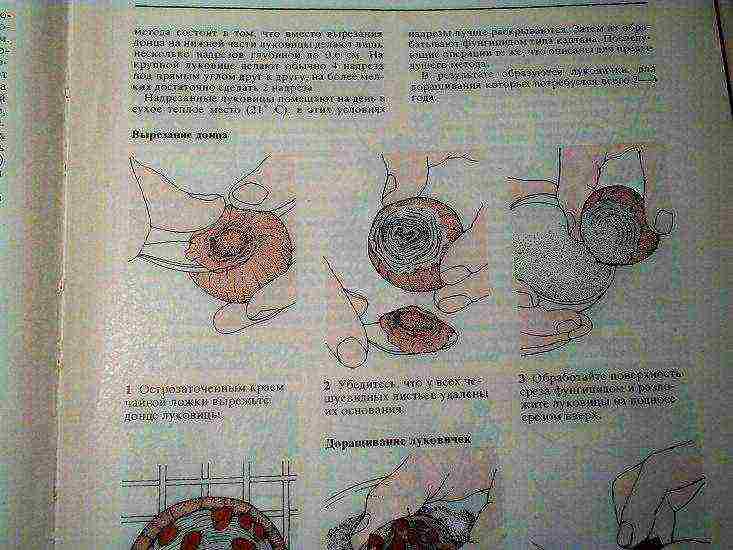
For two years of cultivation, the bulbs reach 0.5-1 cm in diameter by the end of June - the beginning of July. They are dug up, dried and stored in a warm, dry, well-ventilated room at a temperature of 18 ~ 20 * C. In gardens and in private plots, hyacinths are always noticeable: in spring, bright spots of their inflorescences against the background of dark, still dormant earth attract the eye.
Think about what you will plant in this area when the hyacinths have faded.Late flowering annuals or even perennials with a superficial root system can be sown over the hyacinth bulbs resting in the ground. Hyacinth is a flower that is easy to grow even at home - in a flowerpot or on a balcony.
Growing hyacinths
Before planting hyacinth bulbs at home, to stimulate the growing season, you need to hold it in a cool place for a week or two, for example, in a vegetable drawer of the refrigerator. It is cold and dark there, which is just necessary for the awakening of the hyacinth buds. Usually, the bulbs are stored by planting them in a pot.
Growing hyacinths at home
I always dig out hyacinths after flowering. My mother-in-law did not dig up hyacinths and every year fewer and fewer of them bloomed, and in the end they completely died. Maybe, who knows, at least what temperature should be outside so that you can plant hyacinths.

An unpretentious plant, once gave my daughter a pot of hyacinths on March 8th. The genus Hyacinthus includes three types of bulbous plants, of which only Oriental Hyacinthus orientalis and its numerous varieties and hybrids are widely used in decorative floriculture. In the 16th century, the flowering plant came to Holland, where the cultivation of hyacinths became a profitable business.
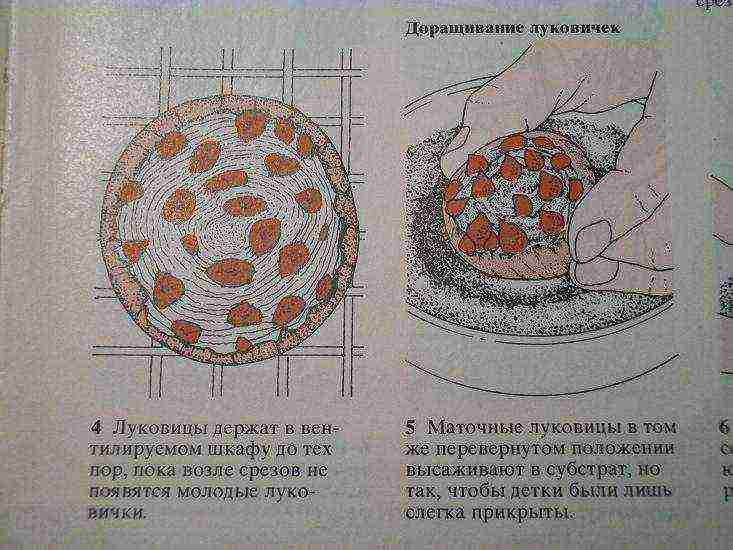
Seed propagation of hyacinths
The growing season for hyacinths is quite short - only 3.5 months pass from the appearance of sprouts to yellowing of the leaves. It continues to grow and, after the appearance of flowers, by the end of flowering reaches a maximum height of 20-30 cm. The graceful spike-shaped inflorescence reaches 10 cm in diameter.
Depending on the structure of the flowers, they are combined into two large groups: simple and double. The yellow hyacinths bloom later than all. Blooming hyacinths have a delicate, unforgettable scent.
How to grow hyacinths? Simple Tips
Hyacinths have large bulbs, consisting of 16-20 juicy storage scales, each of which lives up to 4 years, and dry outer ones. Hyacinths, unlike other bulbous ones, are demanding on warmth, soil richness and moisture. When choosing a landing site, you need to keep these features in mind. Only sunny, open areas protected from the prevailing winds are suitable for hyacinths.
But tall trees are strong and dangerous competitors, next to them, hyacinth flowers can suffer from a lack of moisture and nutrients. A well thought out drainage system or planting in containers and on high ridges can help with excess moisture.
In the middle lane, hyacinths are planted in September. If you are growing a hyacinth flower for Valentine's Day, plant the bulb in October. Hyacinths can be grown in two ways: using seeds or using bulbs. With the exception of a few Dutch varieties known for their capricious nature, the plants are unpretentious to care for, so growing hyacinths is an exciting and rewarding business.
Hyacinth is a perennial bulbous plant from the Asparagus family. Leaves are belt-shaped. Numerous small flowers are collected at the top of the peduncle, they are distinguished by a huge variety of colors, most of them have a strong pleasant aroma. The seeds are located 2 in each of the three compartments of the capsule fruit.
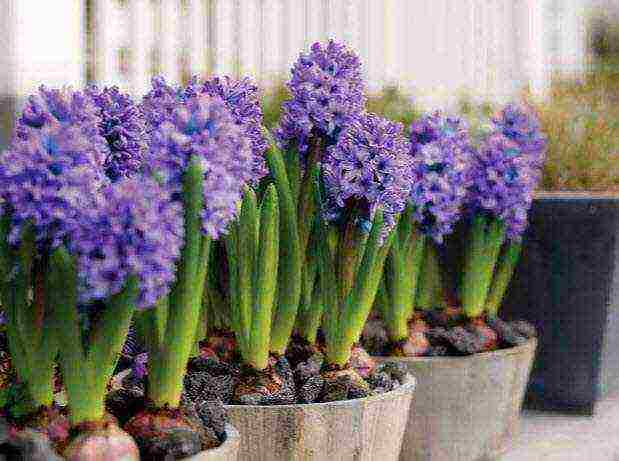
Features of growing hyacinth outdoors in the garden
Hyacinth is one of the first flowers to bloom in spring. But, unlike cold-hardy daffodils and tulips, it requires much more attention:
- the site should be fertile, with loose soil, loosen and lime if necessary;
- winds can damage hyacinths, it is necessary to protect from them;
- hyacinths hate weeds around them, carefully weed the beds and flower beds;
- to avoid degeneration, hyacinth bulbs must not be left in the ground. They need to be dug up;
Planting hyacinth in the ground
Planting methods
Hyacinth is planted in the ground with bulbs.This is the most correct for the further physiological development of the flower.
Optimal planting time
In open ground, hyacinths are planted only in the fall. Time can shift from September-October in more northerly and cooler climates to November in the south.
Soil for plants in the garden and soil for the home
To grow a rather capricious hyacinth on the site, you need to take into account many factors:
- the soil should not be acidic (add sand or other baking powder);
- with increased acidity of the soil, lime, chalk, eggshells, etc. should be added to it);
- the flower bed is best done at a slope or on an elevation to avoid stagnation of spring waters;
- the soil must be constantly loosened, this is a necessary condition for growing hyacinths;
- any weed is the enemy of hyacinth, weed everything around carefully.
For planting hyacinths in a room pot, the soil is compiled according to the same principles: looseness, drainage, neutrality of a chemical reaction, lightness, water permeability and nutritional value. You can buy any soil, you can make up of equal parts of humus, peat and sand. The main thing: in no case do not add organic matter that is not completely rotted. This will kill the hyacinth bulbs.
Planting in autumn
When planting hyacinths, it is very important to catch the right moment, which varies depending on the local climate.
That is: so early that the bulbs have time to take root, but at the same time so late that they do not grow and freeze from the onset of frost. In the middle lane, this is October. More southerly sites - November.
You need to prepare for planting in June. If you make the beds in a hurry, then they will shrink and tear off the thin roots of the hyacinths. By the fall, the bed should stand at least 2 months. Digging should be deep, 5 kg are embedded in the soil for each square meter. humus, 100 g of superphosphate, 50 g of potassium salt. It is good to add ash as a disinfecting and nutritional component.
It is recommended to take medium-sized bulbs for the future flower garden (3-4 cm in diameter). Larger ones are better used not for flowers, but for the reproduction of hyacinths, by obtaining babies from the uterine bulb.
They are planted to a depth of 9-12 cm, then mulched with sand, insulated with straw and laid on top with spruce branches. It will not be superfluous to hold the bulbs in a solution of fungicides or potassium permanganate for at least an hour before planting, as well as spill the beds themselves with similar solutions.
Planting in spring
Planting in spring does not make sense because even in warm climates the plant will not have time to take root and accumulate strength not only for flowering, but also for normal growth in subsequent seasons. But the hyacinth in the ground will have time to catch various sores. Therefore, it will be optimal to store the bulbs until the fall.
Features of hyacinth care in the open field

Location and lighting for the plant
Like any flower, hyacinth loves the sun. But direct sunlight is not for him. Some gardeners have found a way to plant bulbs under trees to shade the plants. But in this case, enhanced feeding is required so that the roots of the trees themselves do not deprive the hyacinths of nutrition and watering in order to avoid overdrying the soil.
It is better to choose a place for planting either with a slight elevation or with a slope, so that excess water has the opportunity to drain and does not damage the bulbs. The soil is chosen light, nutritious, but (since hyacinth is susceptible to diseases) it is strictly forbidden to plant hyacinths after similar bulbous crops.
Air humidity
Air humidity does not play a special role. It is much more important to protect the sprouts from the wind.
How to water properly
Watering hyacinths is very fond of. If the soil is loose and moisture-permeable enough, then it is impossible to pour it in the garden. Indeed, in natural conditions, hyacinths grow and bloom during the period of melting snow or heavy rains.For plants in an apartment, you can wait for the top layer to dry slightly, and then immediately irrigate with non-cold water.
Fertilizing and fertilizing a flower
Since all processes in hyacinths go very quickly, the task of the gardener is to support the strength of the flower with good nutrition. If you have correctly laid the soil for hyacinths in the fall, then it will be enough to feed the flower twice: during the period of emergence of sprouts and when peduncles appear. The first top dressing is ammonium nitrate (30-40 g per square meter), before flowering, superphosphate and potassium chloride are added to the same amount of ammonium nitrate.
British scientists published information about the rationality of this type of mineral fertilization: in the fall, nitrogen-containing substances (sodium nitrate) are introduced, and in the spring they are fed twice with potassium sulfate.
Pruning hyacinth
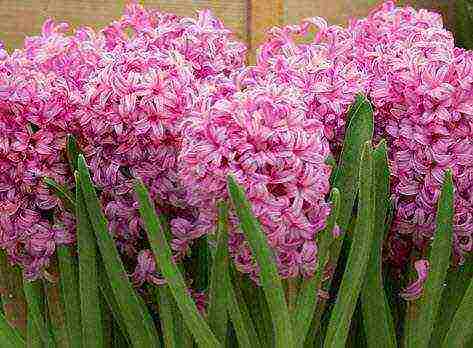
The hyacinth must be cut off, otherwise it will not be possible to achieve flowering next year.
Pruning methods
After the end of flowering, the hyacinth is cut off, but only the peduncle itself, the leaves remain for some time, until they themselves completely twist and turn yellow. Then complete pruning of both leaves and pruning of roots is already performed so that the bulb can fully rest.
Transfer
It is very rare to talk about a hyacinth transplant, since the flower has to be taken out of the ground every year for the winter and allowed to rest.
Transplant methods
When transplanting a hyacinth, the bulb is shaken off the ground, dried and sent to rest for several months, after which it is re-planted in a renewed substrate in order to avoid the accumulation of diseases.
Hyacinth transplant after purchase and after flowering
If you bought a blooming hyacinth and it looks good, wait a little with the transplant. Harsh intervention will only hurt. He will need a transplant only in case of obvious problems with drainage or damage to the pot. But even in this case, try to just handle the whole clod of earth in the most careful way, without disturbing the bulb and roots.
The finally faded plant is cut off (first, the peduncle, and after the leaves wither, they too) and then the bulbs are pulled out for further storage and subsequent autumn transplantation.
Hyacinth propagation

You can, of course, buy a flowering plant in the store, and then throw away the faded and acquire another next year. It's less troublesome. But why not try to propagate the hyacinth yourself. With knowledge of the intricacies of the process, it is not so difficult.
Reproduction methods
Hyacinth is bred with the help of baby bulbs, less often with seeds and children.
Propagation of hyacinth by seeds
The seed propagation process is quite lengthy. After all, the resulting bulbs will bloom no earlier than the fourth year after appearance. This is more interesting from the point of view of selection.
Boxes with mature seeds are dried until they crack and ready seeds spill out. They are sown in the prepared soil in the fall (at the same time as the bulbs) rather densely (up to 2 hundred per square meter), necessarily providing a large percentage of disinfected coarse sand or other loose filler.
Then they are sprinkled on 1.5-2 cm with the same sand, after which they are insulated before winter with 20 cm layers of leaves, hay or compost.
In the first year, you should not dig out a weak onion that has appeared. The risk of damage is high. But in the following years, bulbs that have gained mass are dug out like all hyacinths.
Propagation by leaves
For reproduction by leaves, you will have to sacrifice flowering, since the leaves will take root only during the budding period. No more than 2 leaves are taken from each plant, after treatment with preparations for disinfection and enhancement of germinating properties, they are placed in a mixture of peat and sand. With a maintained high humidity and temperature of 15 degrees (the light should not be bright, but diffused), up to a dozen bulbs with roots are formed in two months.
Reproduction by children
The most common way of hyacinth propagation is with bulbs in babies.
You can simply collect those secondary bulbs that are formed on the main bulb after digging up in summer-autumn and grow them for 2-3 seasons. But methods of artificial damage to the bulb (by cuts or complete removal of the bottom) are more effective. In such cases, this operation is carried out in dry weather and only with disinfected instruments (knife, scalpel).
Then the bulbs are kept at a temperature of 20-22 degrees, cuts up, at a fairly low humidity (no more than 75%). And after a while, tiny bulbs will appear at the site of the cuts. Then the temperature is increased (up to 30 degrees), humidity also (up to 90%), leaving the bulbs in the dark.
Hyacinth bulbs "operated" in this way in early July will give birth by autumn.
Hyacinth bloom

Flowering period, flower shape
Hyacinth blooms at home in January-February. On the site, flowering may begin in March, and in more northern areas in April. But the flowering period is rather short. At most 3 weeks.
In most varieties, each bulb has only one peduncle with a racemose of collected inflorescences. Differs in a huge variety of colors and shapes of the flower itself.
Problems, diseases and pests in the flower
Hyacinths are ill infrequently in open ground.
Excess nitrogen and excess moisture can lead to bacterial diseases such as white or yellow rot. The disease begins with spots on the leaves (along the veins or in the upper part), it is not worth treating it. Defective material is thrown away and everything that diseased plants touched is carefully processed.
Formalin, foundazol, euparen will be needed by the grower in the case of fungal diseases of hyacinth, such as root and gray rot.
There is also such a problem: the peduncle, immediately after appearance, tilts strongly and falls to the ground. This is mainly due to improper bulb storage temperatures or soil overflow.
Among the pests should be called the stem nematode and (more often) the root onion mite. Wireworms and hoverfly larvae can severely damage the hyacinth bulb.
A good help in the fight against pests (except for chemicals) will be the alternation of crops on the site, like marigolds or tomatoes.
Popular species (varieties)
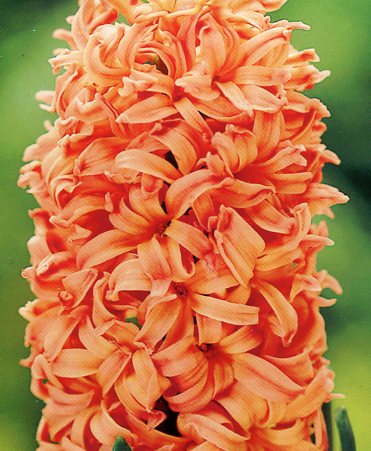
- Gipsy Queen - it blooms in orange;
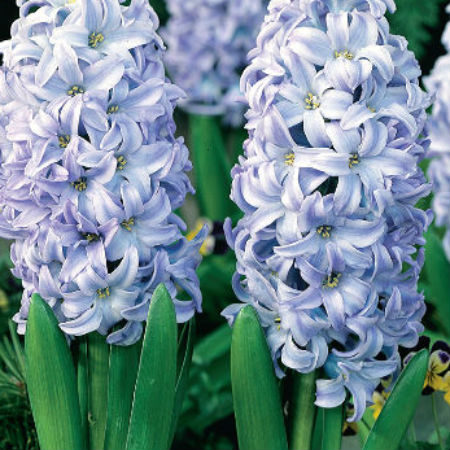
- Sky Jacket blue variety with huge flowers;

- Jan Bos bright crimson;

- Lady Derby soft pink or matte lilac;
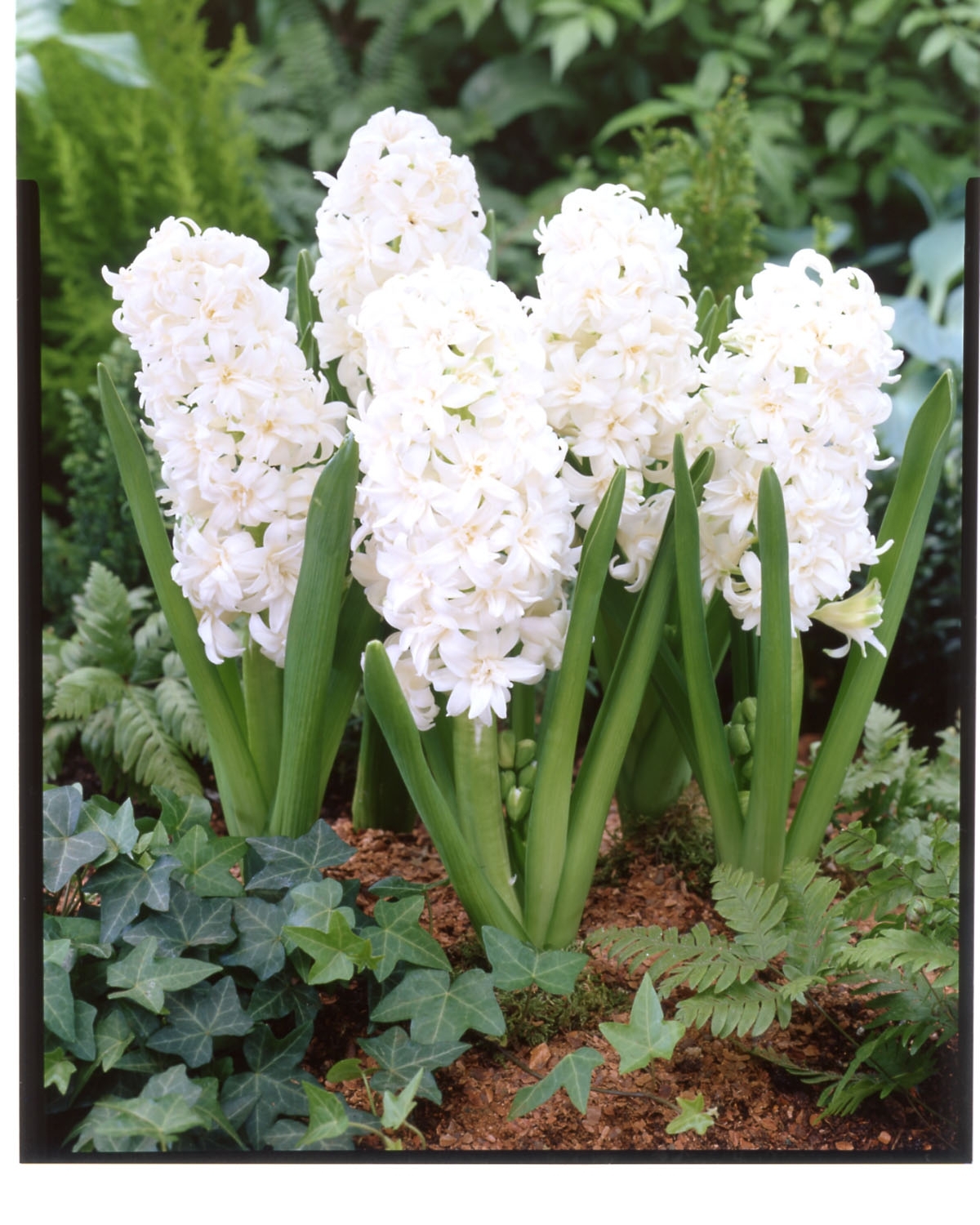
- Snow Crystal late hyacinth with a rather high peduncle and double flowers;
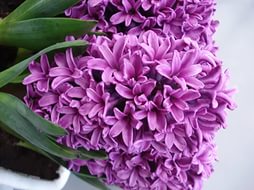
- Bismarck - an early variety, with a thick purple hue with a brighter longitudinal stripe.
Note to the florist
LITTLE SECRET: Did you know that the appearance of the hyacinth bulb can help in identifying an unfamiliar variety. So an egg-like bulb will most likely give a snow-white hyacinth, a spherical shape - it will grow into a red inflorescence that resembles a cone with a wide base, forms a blue or pink flower, and with a slightly expanding cone of the bulb, a yellow plant will turn out from it.
Did you know that the idea of getting a lot of bulbs from a specially damaged bulb was suggested by a mouse? Since then, breeders have been able to obtain far more hyacinths from each plant.
Answers to readers' questions
Plant lifespan
The Hyacinth bulb can live for more than 10 years, but it is much wiser to renew the planting material every 3-4 years. Thus, there is no degeneration of the flower in the form of a decrease in the size of flowers and their density. Moreover, hyacinth bulbs are fertile for baby bulbs, one has only to set out to propagate them.
Why doesn't hyacinth bloom?
There can be several reasons for the absence of flowers on a hyacinth:
- improper storage of bulbs during dormancy (high temperature);
- lack of moisture;
- lack of food.
A possible reason for the absence of a flower is the age of the bulb. Too young will not bloom, similar to old bulbs that have exhausted their resource and require replacing the planting material.
Why do the leaves turn yellow (dry)?
The first step is to make sure if this is not a natural process and if a period of rest comes. This usually occurs en masse after flowering ends in June. Then, according to the rules for caring for hyacinths, it is necessary to cut off the leaves, and then dig up the bulbs for storage for some time in a dark, cold place.
In another case, you need to check whether you have overflowed the plant and whether it is sick. Diseases in which the leaves can change color and shape - various fungal and bacterial rot.
It happens that the plant has been attacked by pests (onion hoverfly, wireworm, onion mite), but it simply happens that the flower does not have enough moisture, because hyacinth does not tolerate drought.
Flower care in winter
When you have taken care of the dormant period of indoor hyacinth and let it rest in the fall in a dark, cool place for at least 2-3 months, in November you can carefully and gradually bring the plant out into the light and start preparing it for winter-spring forcing.
A container with a flower is brought in from a temperature close to zero by 12-14 degrees Celsius, lighting is gradually added up to 12 hours a day, and better - all 15 hours. Use backlighting as needed.
After the plant grows, put on the windowsill constantly add temperatures up to 15-20 degrees, but do not exceed this temperature, so as not to damage the flower.
Of course, one should not forget about watering and feeding.

